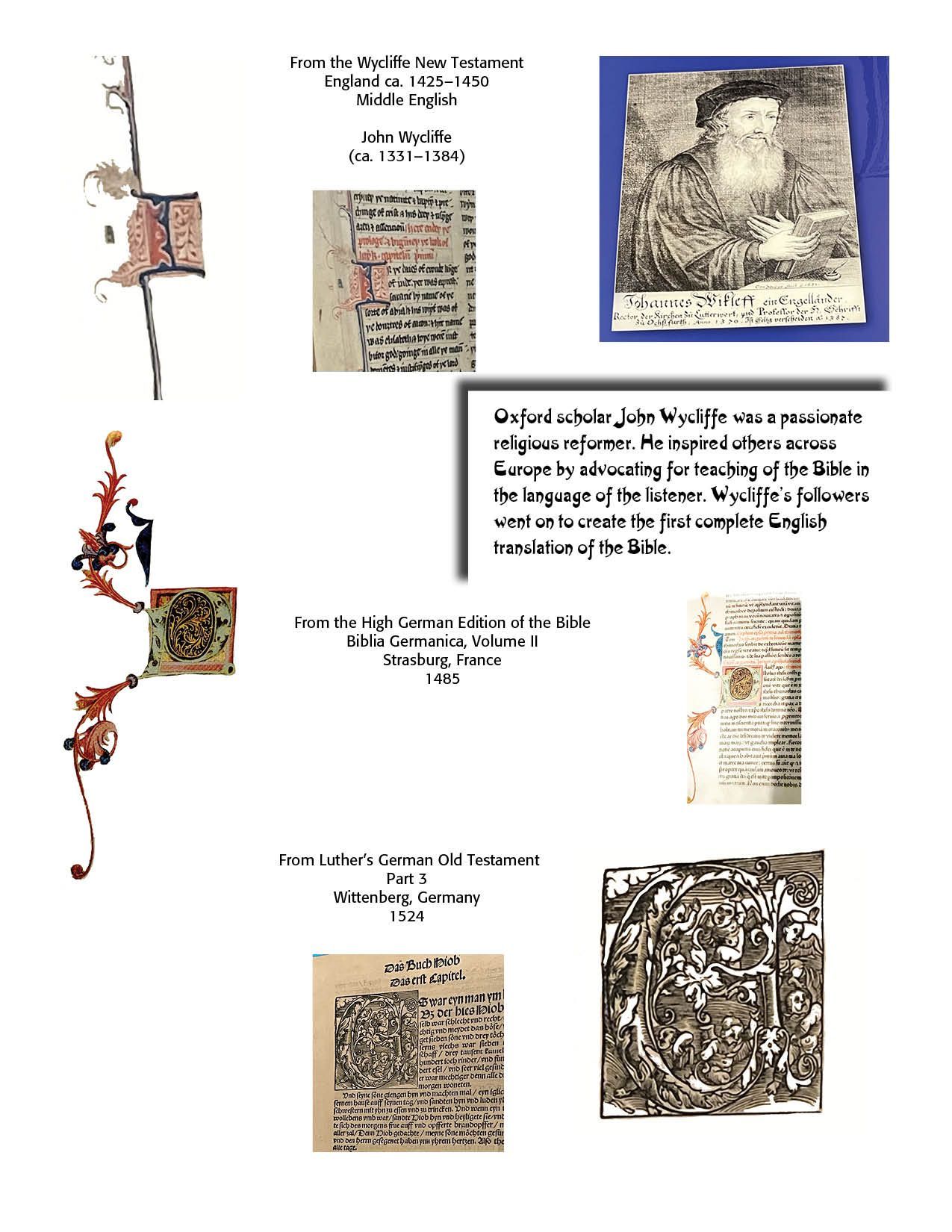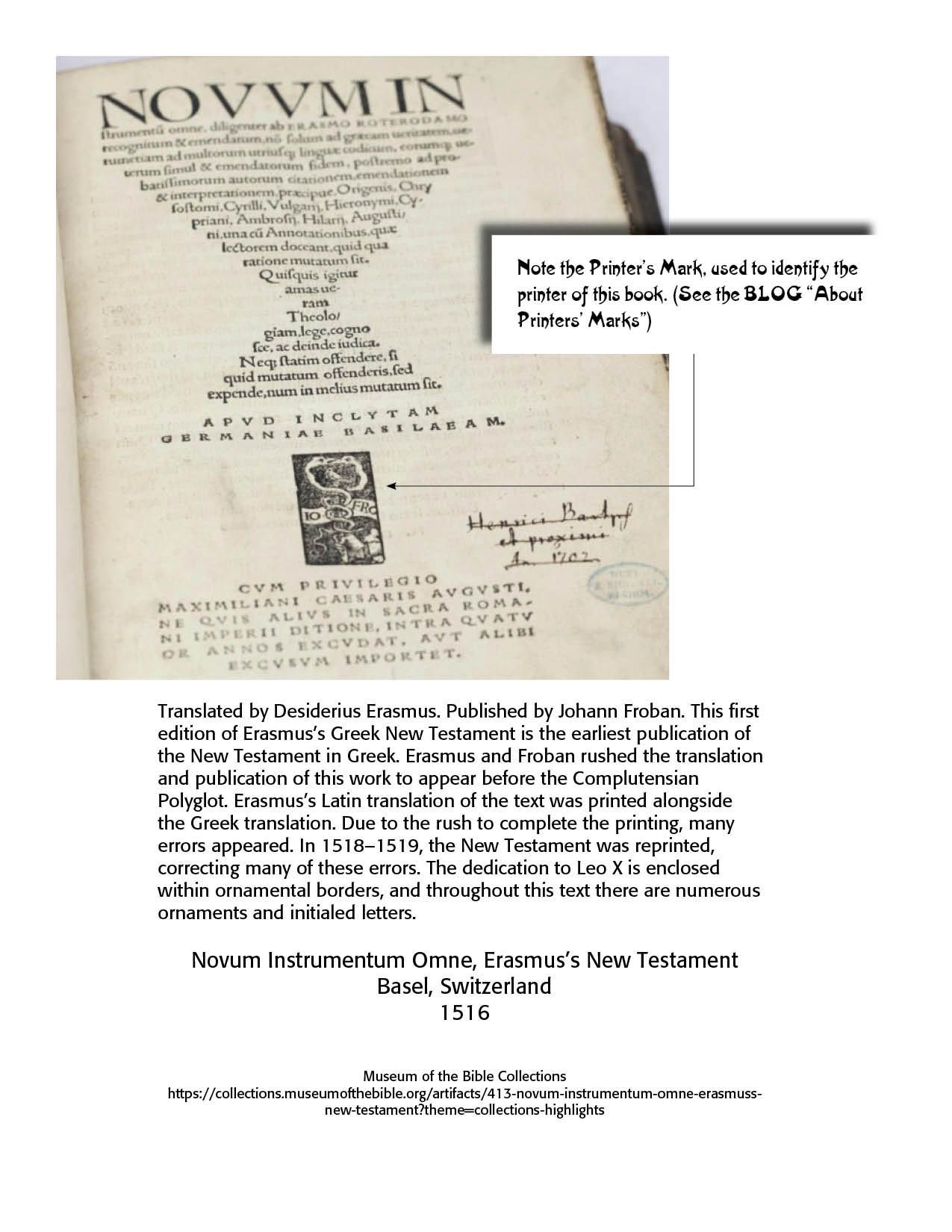Old Bible Typography Versals
My wife and I took a trip to Washington, D.C. to the Museum of the Bible. This is an amazing place with collections of Bible history, Bible characters and Bible applications for the interested viewer. We especially toured the fourth floor that contains more than 600 artifacts and 50 media programs introducing us to the Bible's history, from handwritten scrolls to mobile devices.
As a theologian and typographer, I was interested in not merely the history of the printed Word of God, but also how it was printed through the ages. I was especially fascinated by the delicate and intricate versals, those opening letters and flourishes to the printing. I have gathered a number of the versals and cleaned them up using Adobe Photoshop for display.
The pages below contains some of the oldest versals used in Bible typography and printing. They are historically valuable and worth our time and effort in viewing and understanding. Enjoy them!







Successful Layout & Design



